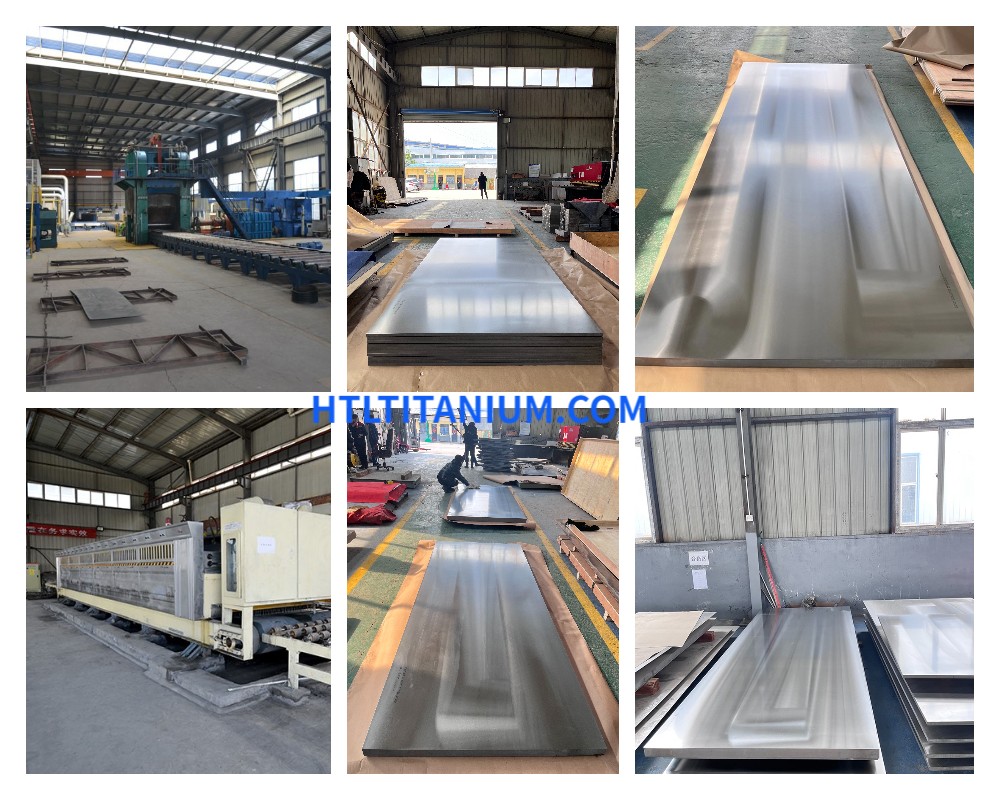Sintering temperature,a higher temperature accelerates the growth rate of titanium carbide grains. The appropriate final sintering temperature for titanium carbide high manganese steel cemented carbide is generally chosen as 1420°C. As a professional titanium plate manufacturer,HTL believes that the sintering temperature should not be too high, as it may cause the loss of liquid phase metal from the bonding phase, leading to the adjacent aggregation and growth of hard phases, resulting in fragmentation. This is the reason for the lower occurrence of bonding phase transformation between the hard phase grains, as analyzed earlier.
However, the sintering temperature should not be too low either, as it may result in under-sintering of the alloy. In addition to controlling the sintering temperature and rate mentioned earlier, the vacuum degree inside the furnace during the liquid-phase sintering stage should also be controlled. Excessive vacuum degree can cause significant evaporation of the liquid phase metal, leading to compositional segregation. Particularly during the three stages of debinding, reduction, and liquid-phase sintering, the heating rate during sintering should not be fast for such alloys.
Strict control of the heating rate and holding time is necessary. In the low-temperature debinding stage, the process of relieving the pressing stress and volatilization of the binder, if the heating rate is fast, the binder may not have sufficient time to volatilize and instead liquefy, resulting in cracking or microcracking of the compact. In the reduction stage above 900°C, sufficient time should be provided for the compact to remove volatiles and oxygen from the raw material powders used, such as the Mn2Fe intermediate alloy. When entering the liquid-phase sintering stage, the heating rate should also be slowed down to ensure thorough alloying of the compact.
Industrial titanium plates with different compositions will exhibit different decarburization behaviors under the same conditions. For example, Si can increase the elastic limit, strength, tempering stability, and resistance to elastic reduction. However, attention must also be given to the severe decarburization on the surface caused by the increased activity of carbon and the chemical potential gradient in the austenite due to different alloying elements affecting the activity and diffusion of carbon.
Titanium plate manufacturer HTL considers surface strength as an important factor influencing fatigue strength. Surface heat treatment and surface cold plastic deformation processes are highly effective in improving fatigue strength and reducing fatigue crack formation. Grinding off the surface decarburization layer generated during heat treatment significantly improves the fatigue limit. Direct shot peening without removing the surface decarburization layer produced after heat treatment has a greater impact on increasing the fatigue limit compared to shot peening after decarburization removal. Other processes that enhance fatigue strength include surface quenching, carburizing, carbonitriding, nitriding, shot peening, and roller burnishing.

One response to “Experimental Methods for Surface Heat Treatment and Surface Cold Plastic Deformation of Titanium Sheets”
Hi, this is a comment.
To get started with moderating, editing, and deleting comments, please visit the Comments screen in the dashboard.
Commenter avatars come from Gravatar.